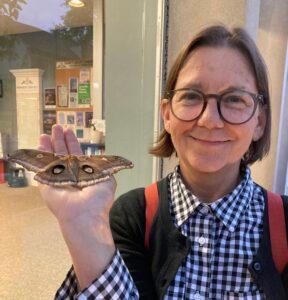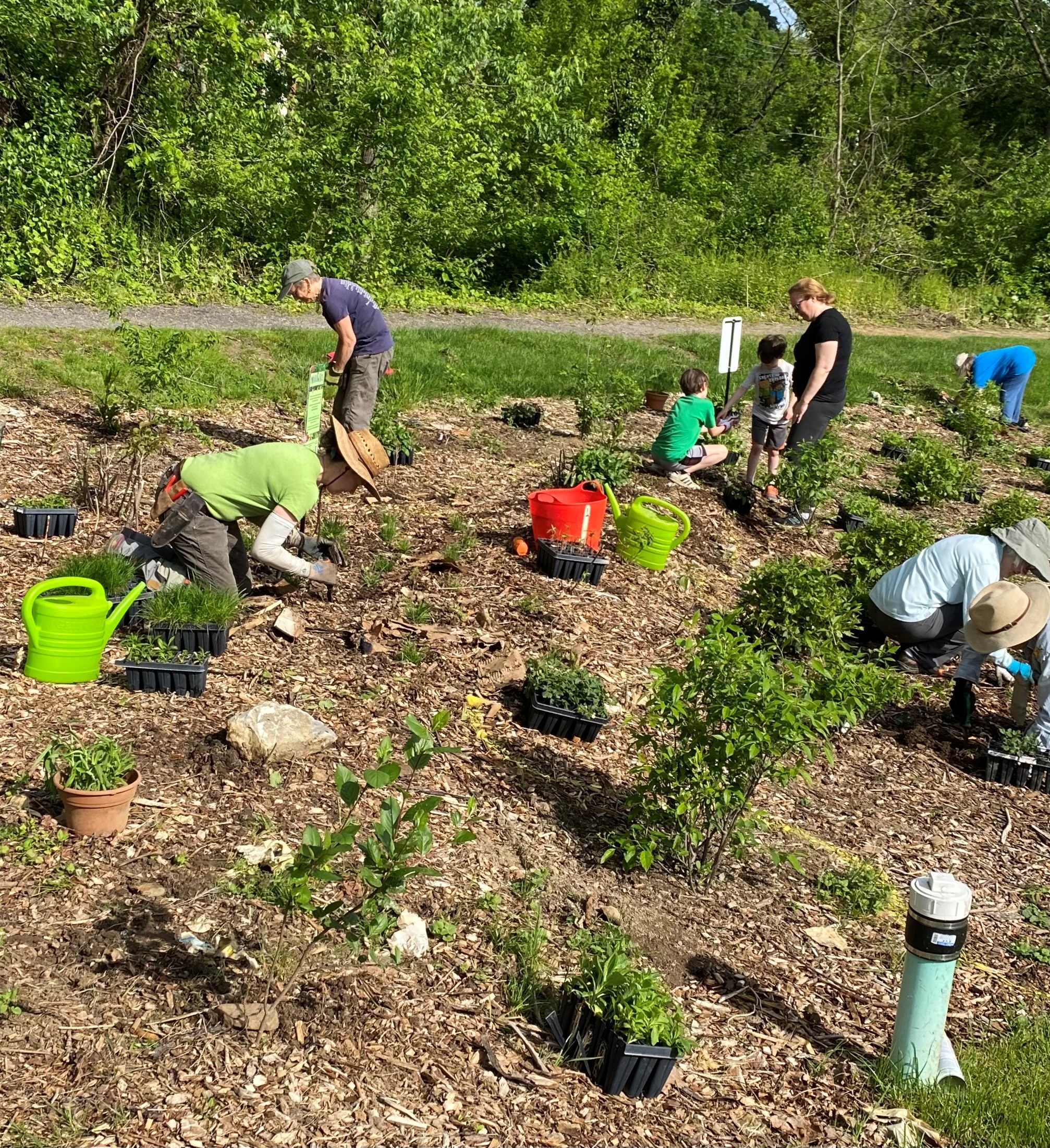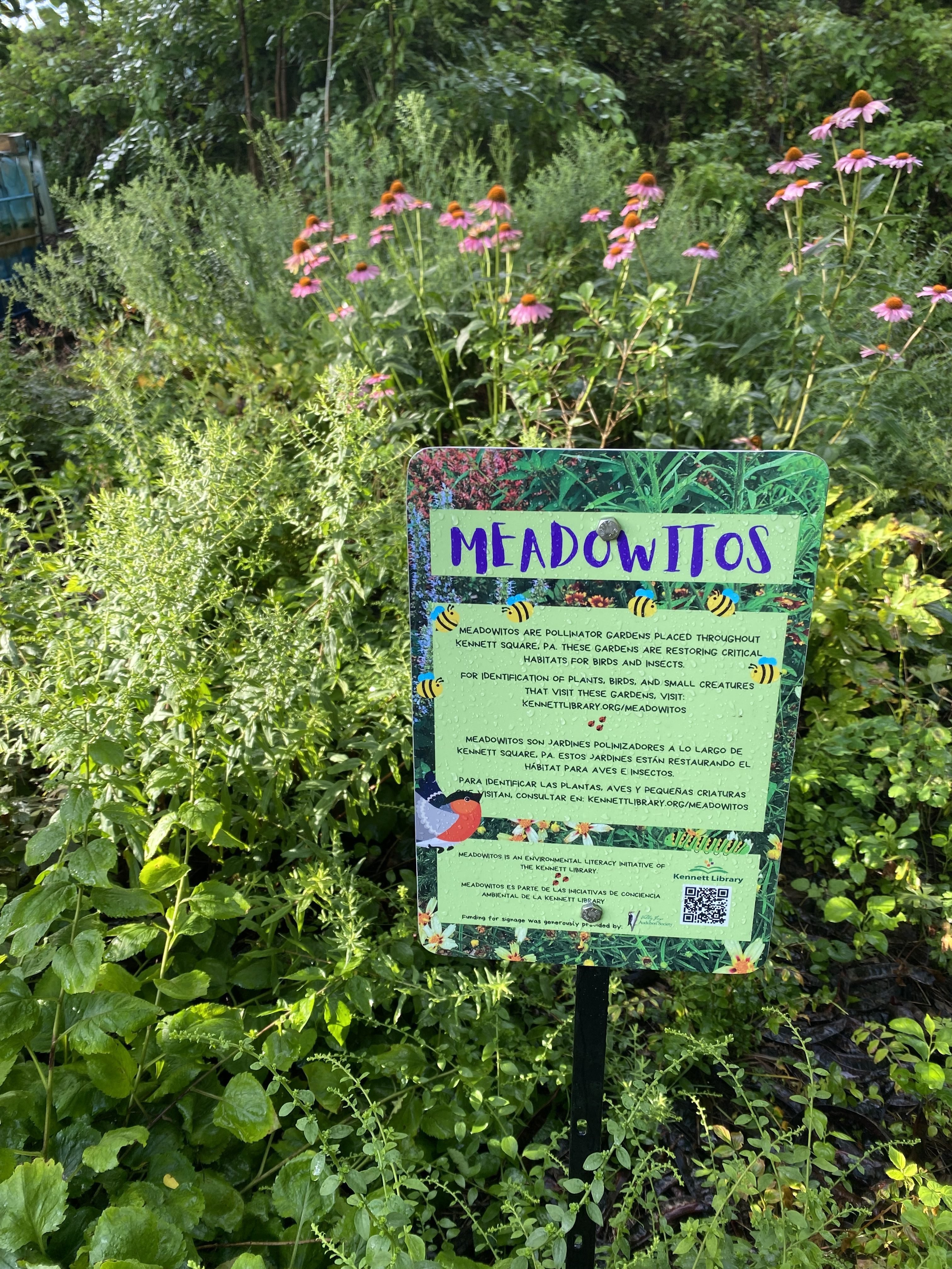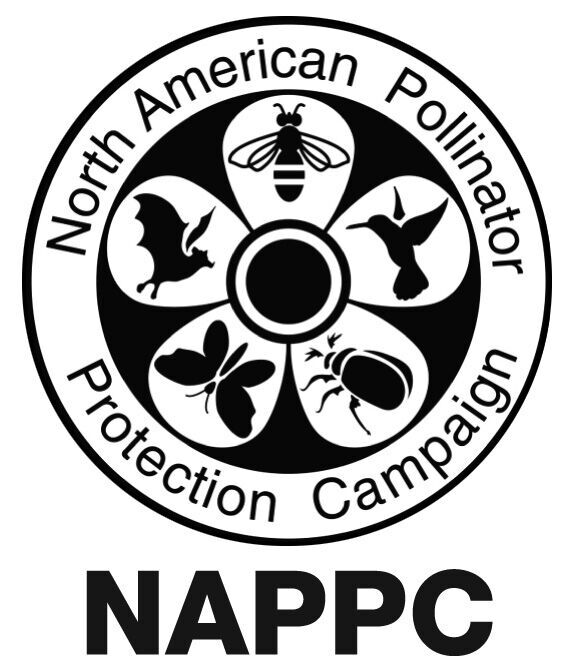Pollinator Conservation Spotlight - Meadowitos
Laura (Lou) Florence with a Polyphemus moth

Food, spices, oils, and fibers – pollinators excel at making these items possible. The complexity of the pollinator world is astounding because of the roles they play and their vitality to healthy ecosystems. We celebrate these achievements through the incredible people and projects that are working to conserve pollinators. We hope these stories encourage and empower you to better understand who our pollinators are and what actions you can take to help them. This month we interviewed Laura (Lou) Florence about Meadowitos!
Q: How would you describe this effort?
A: Meadowitos is an environmental/community project of the Kennett Library that seeks to address the problem of habitat fragmentation, or the decrease in floral resources and natural nesting spaces for native pollinators and wildlife. Fragmentation impacts the ability for a wide variety of wildlife, particularly birds and insects, to thrive. Fragmentation, in both social and natural realms, has profound and negative effects at many levels. When we create pollinator pathways, we enable both humans and wildlife to restore connection. The Meadowitos project encourages and draws from community engagement by inviting people into conversation that develops interest in our natural surroundings.
Q: How did your project start?
A: I have always had an interest in gardening and a few years ago, started a seed library at the library. Then, I heard about a pollinator pathway project in Seattle, Washington and that certain pollinators can’t travel from garden to garden if they are far apart. I saw different wasteland areas in my town and thought it would be great to create pollinator gardens for both pollinators and people. I love native bees, but the project is for ALL flora and fauna. Native bees are good indicators. If we are doing right by the bees then the rest will follow. The name Meadowitos came about because about 50% of Kennett Square’s population in Pennsylvania is Latino and I wanted to acknowledge the community and invite them to be involved in the program.
Q: What got you interested in or inspires you about pollinators?
A: Environmental concerns. Living in an urban setting and being interested in how native flora and fauna survive and thrive in an urban setting. Native pollinators need connection, they need to be able to reach habitat. It felt imperative to address the fragmentation I was seeing in my town. There is also social fragmentation, and these gardens can bridge the gap for both people and pollinators. Those two components are the heart of Meadowitos.
Planting of the Meadowitos rain garden

Q: What are the primary goals and objectives of your project?
A: Establishing, increasing, and connecting pollinator habitat and engaging the community. I would like to start engaging community science and research projects with the community and students from local schools and universities. The meadows can be used for research areas, arts, and wellness.
Q: What successes have you achieved?
A: We’ve planted and maintained eight meadowitos of various sizes since the project started three years ago. We have a seed library, a lecture/speaker series, and Meadowitos Can-Do! workshops, where people can learn how to start their own pollinator gardens; how to collect, clean, save, and plant seeds. Meadowitos is almost completely run on donations. I had a small grant to get started, and for signage. The rest is community members and garden centers donating plants and volunteers donating their time to install and care for the meadows. I try not to make it into a money-dependent project.
Q: What is your biggest challenge?
A: Time. Not having enough time to do everything we want to do. We need to engage the community more, to have them take some ownership in the meadows. We hope community groups will adopt each meadow to help maintain them.
Meadowitos garden sign

Q: We’re always looking to improve our network of partners and promote good informational materials and projects that others can learn from. What are some of your favorite go-to references and resources for pollinator or habitat related questions?
A: Doug Tallamy is nearby at University of Delaware and he and his books are great. He does a wonderful job inspiring people and showing how everything fits together. We have a list of resources on our website, they include Xerces Society, Pollinator Partnership, our local Audubon, Mt. Cuba Center and more. Being at a library, we have a lot of books for resources. One I recommend everyone read is Braiding Sweetgrass by Robin Wall Kimmerer. It is exactly what we are trying to do, spiritually.
Q: How do you engage with your community regarding this work?
A: Since we are based out of the library, a lot of engagement happens there. We have the seed library, posters, brochures, literature, a free lecture series, and workshops. I also attend the local farmer’s market and other events for outreach opportunities.
Q: What is something about pollinator conservation or your project you wish more people knew?
A: If people understood that there is not just one thing that is more important than the other, that they are all important together. Pollinators are our focus, but we are also looking at the plants that sustain them, and what those plants do for the ground, the air, birds, and food. It is a larger thing than just keeping bees alive. It’s the connection of everything. A network rather than a hierarchy. You can’t take one thing out without everything starting to suffer at some level. The meadows are in the community. You have to walk by them, you are going to walk by them, and think about how you are part of nature, how nature is around you and not out there, separate, apart. Bees aren’t scary, they’re busy.

Alone no individual or entity can address all pollinator conservation needs, but through collaborative conservation we can and will make a difference for pollinators and the ecosystems they help support. Keep following our Pollinator Conservation Spotlight series to hear more inspiring pollinator conservation stories. Do you know a great project or organization that is addressing critical pollinator conservation topics and deserve their moment under the spotlight? Let us know!
Article contributed by Meredith Holm, U.S. Fish and Wildlife Service, for the NAPPC Pollinator Communications Taskforce's Pollinator Conservation Spotlight Series. Photos by Laura Florence and Amanda Murphy.
